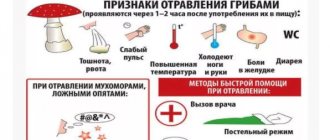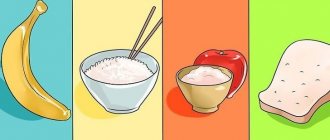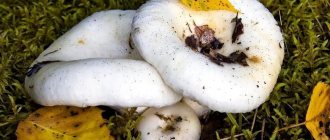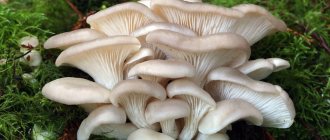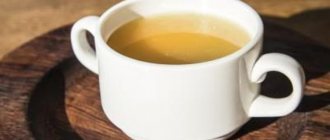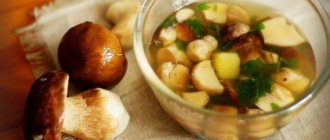In the fall, it’s a busy time for mushroom pickers, when you can unwind your soul by walking through the forest in search of “treasures,” that is, mushrooms. Having brought home full baskets of fragrant, elastic mushrooms, the question immediately arises of how to preserve this delicious beauty. One of the harvesting methods is to seal mushrooms for the winter. After all, they can be stored in jars until the next mushroom season, unlike fresh ones, which quickly deteriorate.
Why are saffron milk caps cloudy and what to do in this case?
For lovers of “quiet” hunting during the mushroom picking season, it is very important to stock up on one of the most popular fruiting bodies – saffron milk caps. These mushrooms are excellent for pickling and pickling, which allows you to preserve nutrients and beneficial microelements almost completely. However, the question always arises: how to store preserved food for a long time so that the saffron milk caps do not become cloudy?
It is worth saying that such mushroom preparations have uniform algorithms, but do not have a set of rules that must be followed. Everything will depend on your taste preferences, and the list of ingredients may also vary. You decide for yourself how long it will take to pickle the saffron milk caps.
Every experienced cook distinguishes 3 methods of salting - dry, cold and hot. However, sometimes there are situations when salted saffron milk caps become cloudy. Is this dangerous, and what should you do with such a snack?
Note that there is nothing dangerous in this situation, and the workpiece can be saved. You should drain the darkened brine, wash the mushrooms, put them in jars and fill them with brine again (take 1 tablespoon of non-iodized salt for 1 liter of boiled water).
Experts' opinion
All experts are unanimous in the opinion that all “folk” methods that supposedly allow you to check whether a mushroom is edible are pseudoscientific and have absolutely no justification. Even if there is the slightest doubt about the edibility of a found mushroom, it should not be taken into the basket. You cannot put off reviewing the entire harvest, so immediately after returning from a “quiet” hunt, you must carefully review and sort out the mushrooms. You should also not collect old, wormy or overgrown mushrooms.
What to do to prevent the brine in salted saffron milk caps from becoming cloudy?
To prevent the brine in cooked saffron milk caps from becoming cloudy, you need to follow several rules, including the initial processing of the fruiting bodies:
- Mushrooms should be collected only in dry, sunny weather;
- You should not store saffron milk caps for a long time, even in the refrigerator. You need to immediately clean them of dirt and cut off the lower parts of the legs.
- Soaking should be carried out exclusively in cold water, changing it several times.
- Use sufficient amounts of non-iodized rock salt. The warmer the room where the mushrooms are salted, the more salt you need.
- Salting should be carried out only in glass, enamel and wooden containers;
- Promptly remove any mold that has appeared from the dishes and the top layer of mushrooms, washing everything with an acidic solution (take 3 tablespoons of vinegar per 1 liter of water).
But if, nevertheless, the brine in the salted saffron milk caps becomes cloudy, what should you do in this case to correct the situation?
- Mushrooms should be strained and rinsed thoroughly under the tap.
- Place in a colander and blanch in boiling water for 5-7 minutes.
- Place in sterilized jars and fill with fresh salty solution. If the mushrooms turn out salty, don’t worry, they are soaked before eating.
Sometimes experienced housewives give advice to beginners and answer why salted saffron milk caps are cloudy. The reason may be several factors, for example, too much spices and herbs. Salted saffron milk caps may darken due to dill seeds if a lot of this spice has been added. Therefore, when salting, it is better to add only coarse salt, black peppercorns and bay leaves. In addition, it is better to put the product in sterilized jars, sprinkle it with a preservative, and fill it with hot water. Cover with tight plastic lids and take to a cool room.
The darkening of mushrooms can also be caused by their storage conditions. The saffron milk caps must be completely covered with brine and not in contact with air. In addition, jars should not be left in a bright room, because sunlight can also cause the brine to become cloudy.
Preparing mushrooms for pickling for the winter
It is better to pickle mushrooms by type and variety, although you can mix different varieties in any proportions.
There are tubular and lamellar types of mushrooms . Tubular with a cap have a lower part in the form of a tube. These are specimens such as boletus, boletus, boletus, boletus and boletus. The plate-like caps have plates at the bottom. Among them, honey mushrooms or chanterelles are most often pickled.
Before pickling mushrooms for the winter, you must immediately soak them in cool water. This will help prevent the spread of worms and will also remove dirt, grass and leaves from the mushrooms and make them easier to clean.
But keep in mind that
the soaking time should not exceed 30 minutes, and for some varieties no more than 10 minutes, since long soaking will cause the mushrooms to absorb excess moisture and lose their original taste.
You need to clean the mushrooms very carefully so that you don’t get sand on your teeth in winter. During cleaning, they should be sorted by type and size. If you have collected butternuts, you need to remove the skin from their caps. There is a very simple way to clean boletus : to do this, take a colander, pour mushrooms into it and immerse them in boiling salted water for one minute. Then, after stirring, filter under cold water. After this procedure, the skin itself will be washed off easily and without any extra effort.
When there are a large number of mushrooms, it can take a lot of time to process them, and during this time they can darken. To prevent this from happening, mushrooms must be stored in a solution of salt, citric acid and cold water. This solution is made very simply: take 1 liter of cold water, 10 grams of salt and 2 grams of citric acid and mix. Ready!
small mushrooms whole (they look beautiful and taste better), but larger specimens, such as porcini mushrooms or moss mushrooms, require additional trimming of the stems. If you come across a very large mushroom, it is better to completely separate the stem from the cap. It will look neater this way, and it will be more pleasant to eat later.
What to do if pickled saffron milk caps become cloudy?
If salted mushrooms can be saved, then with pickled saffron milk caps the situation is completely different. If pickled saffron milk caps become cloudy, it is better to throw them away. The fact is that pickled mushrooms are rolled up with metal lids, which blocks their access to air. So, botulism bacteria can develop in jars, and this often leads to food poisoning. Therefore, experts advise covering pickled mushrooms only with nylon lids.
For lovers of “quiet” hunting during the mushroom picking season, it is very important to stock up on one of the most popular fruiting bodies – saffron milk caps. These mushrooms are excellent for pickling and pickling, which allows you to preserve nutrients and beneficial microelements almost completely. However, the question always arises: how to store preserved food for a long time so that the saffron milk caps do not become cloudy?
Clinical picture of poisoning
The signs of the disease are quite specific. Without a medical education, it is not difficult to understand that botulinus spores have intensified. Symptoms of poisoning appear:
- pain in the legs, limbs become “wobbly”;
- dizziness and severe pain in the head;
- abdominal cramps;
- temperature jump;
- nausea, vomiting, diarrhea, turning into constipation;
- impaired visual function (blurred vision, doubling of objects, impaired blinking, dilated pupils);
- problems with speech (weakness of voice, incoherent pronunciation, throat constriction);
- impaired coordination of movements.
If the victim is not provided with competent medical care within 24 hours, the paralysis progresses, affecting the peripheral nervous system, leading to death. Therefore, it is important to provide assistance to the victim as soon as possible and take him to a medical facility.
What to do if the brine in a jar of mushrooms becomes cloudy?
If these are salted mushrooms, prepared without sealing, then there is no botulism there. Lactic-acidic products of natural fermentation are a reliable barrier to botulism. There cannot be botulism in sauerkraut, cucumbers, tomatoes, mushrooms. Of course, they can spoil, but not due to development they contain botulism. By the way, botulism was discovered not in mushrooms in ancient times, but in blood sausage (the word botulism is translated from Latin and means sausage) And products such as salted mushrooms, etc., until a sealing method was invented, were free from botulism.
But if it’s a wrap, throw it away, and without regret. And you don’t need to try, not a mushroom, not a tiny bit. The toxin that is produced in the jar, in the presence of botulism, is 35,000 times more poisonous and dangerous than the venom of a rattlesnake. Of all cases of food poisoning in my practice, deaths are mostly from mushrooms infected with botulism. If you contact immediately, when symptoms of poisoning appear, you can save a person, but if you contact them late, when someone discovers and calls an ambulance, the chances are very small.
I hope I have scared enough and no one will wonder what to do with a dubious jar of mushrooms. It is impossible to destroy botulism spores at home. Boiling does not destroy them. Only by autoclaving, and temperatures above 130 degrees cannot be reached at home.
But if it’s a wrap, throw it away, and without regret. And you don’t need to try, not a mushroom, not a tiny bit. The toxin that is produced in the jar, in the presence of botulism, is 35,000 times more poisonous and dangerous than the venom of a rattlesnake. Of all cases of food poisoning in my practice, deaths are mostly from mushrooms infected with botulism. If you contact immediately, when symptoms of poisoning appear, you can save a person, but if you contact them late, when someone discovers and calls an ambulance, the chances are very small.
Checking with a bow
There are several precautions that need to be taken when picking mushrooms:
- deadly mushrooms belong to the lamellar type;
- among the tubular subspecies of mushrooms there are poisonous ones, but they are not fatal to humans;
- The fly agaric family is considered the most poisonous. This includes all types of fly agarics and toadstools. These varieties are distinguished by the presence of a thickening at the root of the stem and a ring near the cap;
- Honey mushrooms are not found in coniferous forests. Individuals similar to them in such forests are poisonous;
- The mushroom picker should be alerted to the strong unpleasant smell of industrial alcohol; eating such specimens can lead to unpleasant consequences;
- If the flesh of the mushroom, when broken, acquires a reddish tint, then you should not take it.
If you have the slightest doubt about the edibility of mushrooms, it is better not to eat them to avoid poisoning. There is also no need to trust the opinion that insects avoid poisonous individuals. This is not a reliable indicator of edibility.
Many mushroom pickers are still confident that the use of pre-boiling for a long time helps to completely remove poisonous, toxic substances from the mushroom pulp. But, unfortunately, all the most dangerous poisons are heat-resistant, and even very long boiling has no effect on them.
It should be noted that the erroneous belief that a poisonous mushroom necessarily has an unpleasant and specific odor most often becomes the cause of serious poisoning. For example, the aroma of champignon is practically indistinguishable from the smell of the pulp of the most dangerous, deadly poisonous mushroom - toadstool. Among other things, different people perceive odors very differently and cannot serve as an assessment of the quality and edibility of a mushroom.
We invite you to familiarize yourself with the Description of the gall fungus
Mushroom pickers should definitely adhere to five basic rules of “quiet” hunting:
- all dangerous, deadly poisonous types of mushrooms must be “known by sight”;
- it is important to carefully examine the mushrooms you collect and be able to distinguish edible species from look-alike mushrooms;
- It is forbidden to collect mushrooms in industrial zones and near highways;
- It is not recommended to pick mushrooms in dry and hot weather;
- You cannot collect overgrown mushrooms, even of edible species.
Determining "mushroom poison" using homemade products is a dangerous myth. How to test mushrooms without knowing either the composition of the poisons or the substances that react to them? “Tested products” detect completely different substances.
- Testing with onions, vinegar, and milk, which they try to use as indicators of toxins, actually shows the presence of enzymes such as tyrosinase (it turns onions dark), pepsin (milk curdles). These enzymes are found in many foods, which does not mean they are unsuitable for food.
- Silver items immersed in water with mushrooms darken from amino acids containing sulfur - this is also not poison. There are many of them in meat, fish, seeds - protein-rich foods.
- But substances that cause poisoning cannot be brought to clean water using improvised means. Currently, an “indicator ticket” has been patented that identifies the toxin of the toadstool and the entire deadly Amish genus, but its mass use has not yet been heard.
Among the folk methods, there are several of the most popular, the effectiveness of which we will now evaluate from a scientific point of view.
How to Save Pickled Mushrooms from Cloudy Brine
We recommend reading: Soaking Mushrooms in Salt Water Before Cooking
Pickled Mushrooms Cloudy Brine What to Do
Before stocking up for the winter, housewives look for products and corresponding recipes.
When they find a recipe for pickled obabka mushrooms, many are confused by their name. In fact, obabki is the common name for boletus and aspen boletuses. As you know, this type of mushroom is considered meaty, which is why they are so nutritious. There are many recipes for pickling obabok, but before that you need to carefully prepare the homemade tkemali sauce and product. Also on our website you can find recipes on how to pickle oyster mushrooms so that your whole family will enjoy them. Content. 1 preliminary preparation: 2 marinated obabka mushrooms for the winter 2. 1 necessary ingredients: 2. 2 pickled obabka mushrooms: 3 how to pickle obabka mushrooms for the winter 3. 1 products: 3.
2 how to pickle obabka mushrooms for the winter recipes: 4 how to pickle obabka mushrooms 4. 1 ingredients: 4. 2 pickled obabka mushrooms for the winter recipes: 5 pickle obabka mushrooms 5. 1 ingredients: 5. 2 pickled obabka mushrooms recipe: Preliminary preparation: You can pickle boletus and boletuses of any size and age, but it is still better to choose small young mushrooms. After marinating, it is these specimens that absorb all the smells and tastes of the brine. They are soft, but at the same time elastic, and retain their shape well. Mushrooms must be thoroughly cleaned of films and soil particles. After this, the seeds are washed well several times. In order to completely get rid of foreign particles that can spoil the pickled mushrooms, place them under running water for half a minute. For any pickling recipe, the obabki must be boiled. This is a very important stage in the marinating process, so you should follow a few tips: cook the obabki in small portions in plenty of water.
The boiling process should not last more than 40 minutes, otherwise the mushrooms will boil into jelly. Throughout the cooking time, you need to periodically remove the foam from the broth. You can determine the readiness of the product by the color of the broth - it should become completely transparent. As a result of heat treatment, the mushrooms must decrease in volume several times. Only after this the pre-processing of the obabok is completed and you can proceed directly to pickling. In this case, you can choose a certain type of marinade, which in turn will determine the taste of the preservation. After reading the recipes on our site, you can also prepare other delicious preparations, such as pickled physalis and salted radishes for the winter. Obabki marinated for the winter. Thanks to this recipe, you can use not only miniature specimens, but also larger mushrooms.
At the same time, the cabbages practically do not boil, but absorb the marinade well.
The taste qualities of such a product will appeal to real gourmets. Necessary ingredients: Boletus and boletus in equal proportions; 1 medium sized onion; 1 liter of purified water for marinade; 20 peas of allspice or black pepper; 5 dried cloves; 1 glass 6% vinegar; 5 bay leaves; 120 grams of salt; 120 grams of sugar; a pinch of cinnamon. Marinated obabka mushrooms: Miniature specimens are left unchanged, and large mushrooms are cut into medium pieces - the stem is cut into three parts, and the cap into 5-6 equal parts. After chopping, the product is filled with water and soaked for several hours, only after which the pasta can be cooked. After soaking, the boletus and boletus mushrooms are boiled for about 10 minutes along with the onion. After this, the mushrooms are filtered and filled with water. Lightly salt the water and boil the mushrooms for 20 minutes. In this case, you should periodically remove the foam from the surface of the water. Pour the finished dogwood compote into a colander and let it drain. There is no need to rinse the boiled plant. While the mushrooms are in a colander, the marinade is being prepared.
Preparation of the marinade involves mixing water and the indicated spices except vinegar. Bring water to a boil and add salt and sugar. They are followed by cloves, pepper, bay leaf and cinnamon. During the boiling process, mushrooms are poured into the marinade and everything is boiled for another 30 minutes. 10 minutes before the end of cooking, vinegar is poured into the pan with the broth. The mushrooms along with the marinade are placed in pasteurized jars, which are closed with plastic lids. This recipe is quite original in comparison with others, since it uses original spices, which are mainly used in baking. It is thanks to the seasonings that the obabki turn out whole. For thrifty housewives, we have also prepared recipes for salted tomatoes that will not only decorate your dinner table, but will also be a wonderful and tasty addition to your dinner.
How to pickle mushrooms for the winter. The simplest recipe for pickling boletus and boletus, which any housewife can do. Using it, you can get the expected result, no form major situations. Such preservation does not explode or swell in the cellar, but awaits serving for 1 year. Products: 1 kilogram of donuts; small head of garlic; 1 liter of water; 35 grams salt; 2.5 grams of citric acid. How to pickle mushrooms for the winter recipes: Mushrooms are washed well and left to stand in cold water for 1 hour. Afterwards, each specimen is washed separately under running tap water. Place a saucepan on the fire, pour a liter of water into it and bring to a boil. Prepared mushrooms are poured into the boiling liquid.
After them, half the portion of salt and citric acid is poured into the water.
Boletus and boletus mushrooms should boil for 25-30 minutes. During heat treatment, foam must be constantly removed from the surface of the liquid, otherwise the broth will be cloudy. When the mushrooms begin to sink to the bottom of the container, the rest of the salt and citric acid is poured into the marinade. The marinade is boiled for 2-3 minutes, and then the composition is removed from the heat and poured into previously prepared jars. The jar is filled almost to the top, but there is still a gap of two fingers left from the neck. Place one clove of garlic on top of the mushroom marinade. The containers are sealed with plastic or metal lids. Marinating according to this recipe occurs very quickly and does not require special skills. The main thing is not to get burned in the process of pouring mushrooms and marinade into jars.
Thanks to this treatment, you can marinate a large number of mushrooms. How to pickle obabka mushrooms. This is the most common recipe for pickling boletus and boletus mushrooms. Even wormy specimens can be used in this recipe. To do this, specimens infected with worms are immersed in water for 1 hour, to which vegetable oil is added - 60 grams per 1 liter of liquid. For lovers of winter preparations, our collection of recipes also includes a recipe for pickled tomatoes, which can serve as a separate dish or be used to prepare salads. Ingredients: 1 kilogram of obabok; 60 grams of sugar; 60 grams of salt; 2 bay leaves; 3 pieces of cloves; 1 gram of citric acid; 15 peas of black or allspice; 3 tablespoons 9% vinegar. Pickled mushrooms for the winter recipes: Pour hot water over the prepared soaked and chopped mushrooms. Cook the mushrooms for about 15 minutes. Subsequently, the seeds are poured into a colander and washed with running water. Transfer the product to a saucepan and add 1 liter of boiling water and continue to cook the contents for 15 minutes. At the same moment, spices and citric acid are added.
We recommend reading: How to Keep Plums Fresh in Winter
After 10 minutes of boiling, add salt and sugar. In this case, you should stir so that the contents do not stick to the bottom of the container. Mushrooms are placed in prepared glass containers, which are poured with vinegar on top. Containers can be sealed with plastic or metal lids. Turn the container over until the contents cool completely. The method of preparing obabok according to this recipe is qualitatively different from the others - the taste is original and unforgettable, since there are many spices present here. Marinate obabka mushrooms. The original recipe for pickling boletus and boletus has an interesting taste, which is qualitatively different from classic recipes. Ingredients: 1 kilogram of obabok; 1 liter of water; 20 ml.
70% vinegar essence; 15 black or allspice peas; 5 pieces bay leaf; 4th part of a cinnamon stick; 5 pieces of dried cinnamon; 1 onion; 1 small head of garlic; 50 grams of sugar and
ahara. . Pickled obabki recipe: Prepare jars and lids for canning. It is important to boil them for several minutes. Wash the cabbage, peel, cut and place in a pan for cooking. The pieces should not be cut too thin, otherwise during the cooking process they will break and become like a homogeneous mush. Place the onion in a container with the mushrooms and fill everything with 1 liter of water. During the boiling process, it is imperative to remove the film that forms on the surface of the liquid. If this is not done on time, the mushrooms in the jars will give a cloudy sediment. After this heat treatment, drain the onion broth and rinse the mushrooms under running water. Leave the product in a colander until it drains. Pour 1 liter of water into a container and add all the above-mentioned spices into it. Bring the mixture to a boil.
Place the boiled mushrooms into the bubbling brine. The garlic is peeled and cut into thin slices, which are placed in boiling liquid. All this is boiled for 10 minutes. Add vinegar and boil the contents for another 10 minutes. Using a slotted spoon, the mushrooms are removed from the broth and placed in jars. The broth itself boils for 5 additional minutes and pours the contents of glass jars. The containers are sealed with lids, turned over and put away in a cool, dark place. Cinnamon and garlic combined with onion broth gives an original aroma. The taste seems specific to many, but at the same time interesting and specific. Real gourmets use obabki to prepare salads and soups.
Marinated obabki have an interesting composition and original taste. But it is precisely thanks to this combination that preservation is suitable for preparing many dishes: salads, soups, stews and many others. During the preservation process, you should carefully monitor how the mushrooms are boiled and how containers with lids are sterilized. It is also necessary to consider how and where the preserves are stored - this is as important for a quality product as the plants themselves.
Place the boiled mushrooms into the bubbling brine. The garlic is peeled and cut into thin slices, which are placed in boiling liquid. All this is boiled for 10 minutes. Add vinegar and boil the contents for another 10 minutes. Using a slotted spoon, the mushrooms are removed from the broth and placed in jars. The broth itself boils for 5 additional minutes and pours the contents of glass jars. The containers are sealed with lids, turned over and put away in a cool, dark place. Cinnamon and garlic combined with onion broth gives an original aroma. The taste seems specific to many, but at the same time interesting and specific. Real gourmets use obabki to prepare salads and soups.
Consequences of the disease
Practice shows that after a severe form of the disease, even with qualified therapy, recovery is slow, over several weeks. Residual signs may be felt for several months.
More often, the consequences of botulism make themselves felt when restoration measures are not carried out in a timely manner. We are talking about the following conditions:
- tracheobronchitis and acute respiratory failure;
- aspiration pneumonia;
- mumps of purulent type;
- myositis and myocarditis.
It is worth knowing about the side effects of therapy, as the body’s response to toxoid. Such reactions include serum sickness and anaphylactic shock.
Silent hunting: the result must be safe
In the autumn, on the highway along the forest, you constantly come across parked cars without owners. These mushroom pickers went fishing. Mushroom picking is not only a concern for the variety of the menu, but also a wonderful vacation, which is why many residents of megacities spend the whole weekend in the forest.
There are also passionate mushroom pickers who set their own records for mushroom picking, and then proudly show the results to their family and neighbors. Among mushroom hikers, few people think about the danger, namely the presence of botulism in collected mushrooms. And in vain. Mushrooms occupy a leading position among foods dangerous for botulism.
About the root cause or where does botulism come from in mushrooms?
The bacteria that causes botulism live in the soil. And in quite large quantities. You don’t have to make any special efforts to get Clostridium botulinum into your basket. If you collect mushrooms together with mycelium, rest assured, you will definitely bring clostridia home. If you also create conditions that are suitable for her, then the likelihood of the disease will increase significantly.
Conclusion 1: To avoid infection, pick mushrooms carefully. Cut off milk mushrooms, milk mushrooms and any other mushrooms without mycelium. Even in the forest, try to use a knife to clean the leg as much as possible from any remaining soil.
In pursuit of quantity, do not forget about quality. You should not take old and overgrown exhibits, because it is unlikely that it will be possible to clean them from soil efficiently. When collecting milk mushrooms, look carefully around: they grow in families, so next to the old and large mushrooms, under the needles you will probably find young, fresh ones. Take these milk mushrooms, and don’t bother the “oldies.”
The container you choose for collecting mushrooms also matters. The ideal option is a basket made of willow twigs - it is well ventilated, and accidentally dropped soil easily spills out through the cracks without contaminating other mushrooms.
Impossible to recognize
You will not see signs of the disease with the naked eye. As, indeed, with an armed eye. Clostridia does not manifest itself in any way either in a calm state or in the process of active toxin production. All that is required to activate it is the absence of air.
You will object that they should look for signs? The lid on a jar of mushrooms is swollen - here's your proof! Or the mushrooms have simply become cloudy, we’ll throw them out too!
Regarding the throwing away of conservation that has lost its charm, you are absolutely right. But the fact that clostridium botulism is raging in a jar with a swollen lid is not very good. Cloudiness of the brine, an abundance of gases in a jar of canned mushrooms are signs of the presence of other bacteria that can cause poisoning. Clostridia is a modest lady and does not have such strong gas-forming abilities. While producing a toxin, it does not in any way affect the quality of home canned food. Mushrooms can be very tasty, and signs of the disease can only be determined after the latent (incubation) period has ended.
We recommend reading: How to Get Rid of Mold on Pine Nuts
Is it possible to check the degree of edibility “by eye”, and what are the consequences of this?
People have many ways to identify poisonous mushrooms, but such methods are very questionable. Beginning mushroom pickers believe that the smell will help in this matter: supposedly harmful varieties have an unpleasant, specific odor.
However, each person perceives aromas differently, and some edible species also smell unpleasant (for example, ordinary champignon).
Some people believe that insects and worms do not eat the poisonous pulp, so only sharpened specimens are collected. A fundamentally wrong practice that has no scientific evidence. In addition, we remember the dangers of eating wormy foods.
But the most health-threatening statement was the thesis that drinking alcohol with mushrooms can neutralize poison of even the most dangerous type. Alcohol does not have such properties; moreover, in some cases it only worsens the situation.
Safe harvesting methods
To prevent homemade mushroom preparations from causing accidental botulinum toxin poisoning, choose the following cooking methods for future use:
As you can see, we did not include canning in this list. Because the environment in jars with canned mushrooms is the most suitable for the production of botulinum toxin - non-acidic and airless. As for pickled mushrooms, botulism may also be present in them. In case of violation of cooking rules. Therefore, we remind you of the basic rules:
- Sort through and thoroughly clean the mushrooms from soil and needles immediately after collection.
- For preventive purposes, wash the mushrooms several times.
- Boil the mushrooms twice. Drain the first water.
- Properly sterilize jars and lids for pickling - boil or steam for at least half an hour.
- Add enough salt and vinegar when marinating. An acidic environment can neutralize botulinum toxin.
Toxicology specialists believe that poisoning can only be guaranteed to be excluded if autoclaving is used when storing mushrooms in jars. Just like they do in industrial food factories.
Conclusion 2: If you are an avid mushroom picker, buy a home autoclave. This is not a luxury, but a necessity.
Salted, dried mushrooms and botulism
There is no botulism in salted and dried mushrooms. Only because there is air in them. Dried mushrooms are stored in linen bags, and salted mushrooms are stored in barrels or other containers with access to air. We don’t think that city dwellers have a barrel of salted mushrooms in stock. But in forested, rural areas, and in some people’s cellars, it’s quite possible. Especially if the owner loves and knows how to collect milk mushrooms. The families of these mushrooms can be so representative that they can easily fill an oak barrel! There are just a few things you should know about them.
- Milk mushrooms require soaking before salting. After careful sorting, soak the milk mushrooms in water, which you change 2-3 times a day. Soak white and black milk mushrooms for at least 2 days.
- Stir the mushrooms placed for pickling periodically. Do this so that air penetrates into the deepest layers. Store mushrooms in a cool place - in the cellar or refrigerator.
Other mushrooms, less dense in structure than milk mushrooms, do not require such long soaking. For red mushrooms and saffron milk caps, a 4-hour soaking is sufficient.
Interesting! Did you know that salted mushrooms are only a Russian food? They are not used in the cuisines of other countries.
Salting, drying and freezing are the most reliable and safe ways to prepare mushrooms. Therefore, when going on a quiet hunt in forests and groves, plan in advance what you will do with the mushroom prey. And don't put yourself at risk of botulism!
Regarding the throwing away of conservation that has lost its charm, you are absolutely right. But the fact that clostridium botulism is raging in a jar with a swollen lid is not very good. Cloudiness of the brine, an abundance of gases in a jar of canned mushrooms are signs of the presence of other bacteria that can cause poisoning. Clostridia is a modest lady and does not have such strong gas-forming abilities. While producing a toxin, it does not in any way affect the quality of home canned food. Mushrooms can be very tasty, and signs of the disease can only be determined after the latent (incubation) period has ended.
